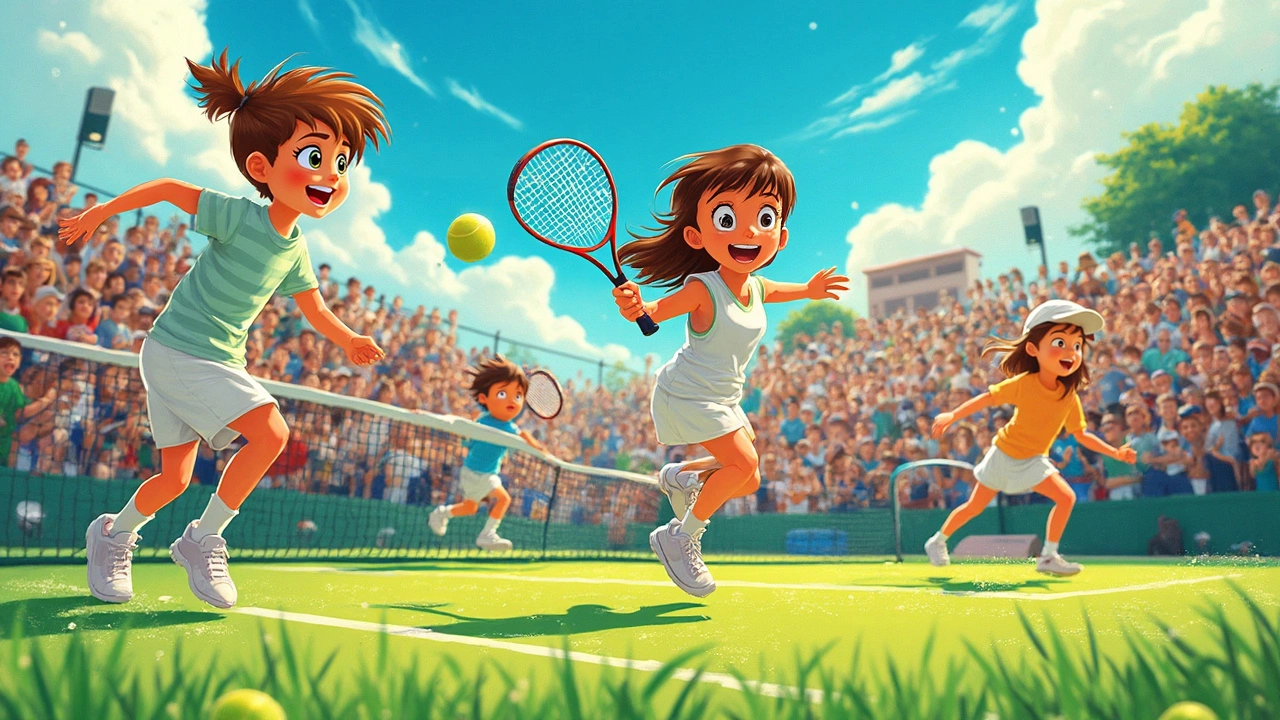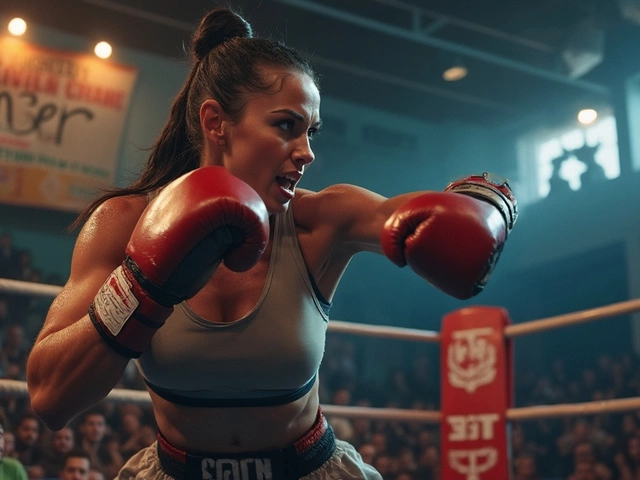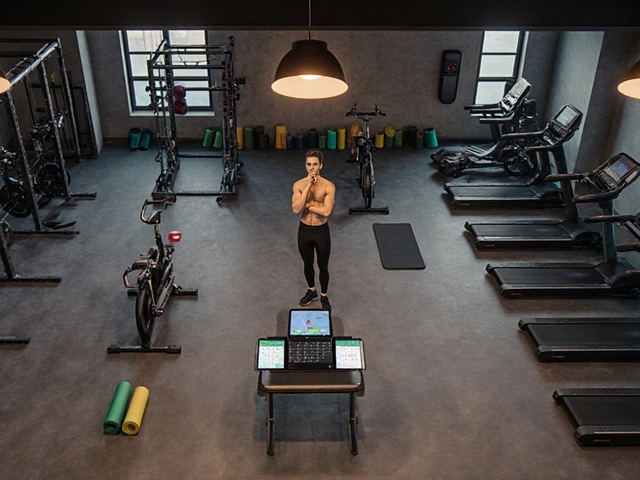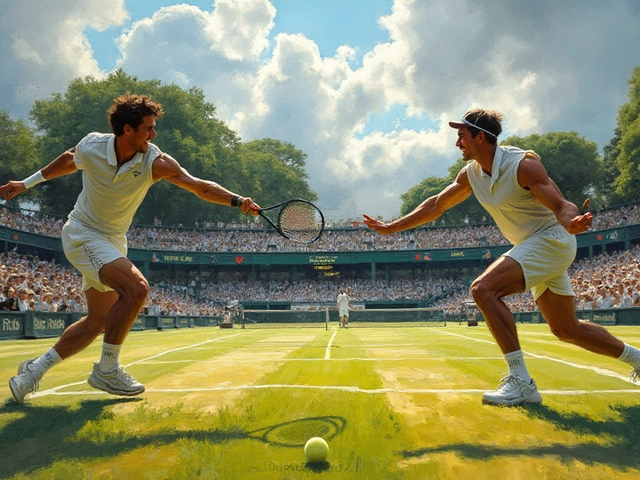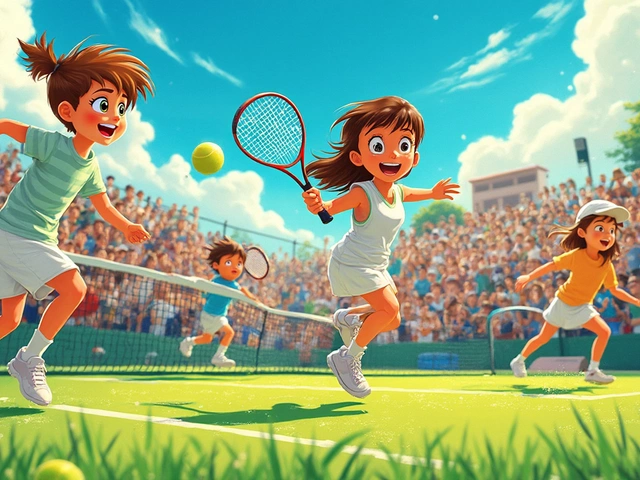When it comes to tennis tournaments, age isn't just a number—it's a rulebook staple. In junior tournaments, age limits are strictly enforced to give young players a fair playfield. Governing bodies like the ITF have set specific age brackets, ensuring junior players compete against peers of similar maturity and skill levels. Aspiring athletes under 18 must navigate these rules to participate in youth championships.
But what about the pros? On the professional circuit, age regulations shift gears. While there's no upper age restriction, players must be at least 18 to easily access major ATP or WTA tours. Yet, there's a window for budding stars between 14–17 to compete under certain conditions, with limits on the number of tournaments they can enter. Such guidelines help manage player workload and development.
Curious about how age affects the game beyond the rules? Think of Martina Hingis, who, at 16, was the youngest Grand Slam winner in modern tennis, a record still celebrated today. On the flip side, Roger Federer and Serena Williams have shown age is no barrier, continuing to thrill audiences well into their late 30s.
- Understanding Junior Tournaments
- Age Rules in Professional Tennis
- The Role of Governing Bodies
- Noteworthy Age-Related Records
- Tips for Aspiring Young Players
- The Future of Age Regulations in Tennis
Understanding Junior Tournaments
Junior tennis tournaments are where budding talents get their first taste of competitive tennis. These events, governed by the ITF (International Tennis Federation), follow strict age limits, making sure players compete against others in similar stages of development. Typically, these tournaments accommodate players aged 18 and under, categorizing them into various levels such as 12U, 14U, 16U, and 18U. Each bracket is designed to suit the physical and mental maturity of junior players.
Age Categories and Tournaments
The ITF organizes junior circuits globally, often dubbed as the breeding ground for future tennis stars. It's the starting line where players aged 13 to 18 showcase their skills. Some of the most well-known events on this circuit are the Junior Grand Slams, held alongside the main Grand Slam events, like Wimbledon or the US Open.
The Importance of Age Limits
Why are these age limits crucial? They ensure fairness and safety by keeping young players from facing opponents who might be physically stronger. This structure supports healthy competition and gradual improvement in a player's game.
Opportunities and Pathways
For those interested in making a mark early on, the pathways are quite clear. Successful performance in these junior tournaments can earn points that count towards junior rankings, helping players gain entry into more prestigious events. In some cases, players might receive wild cards to enter professional tournaments, a key step in transitioning to the senior tour.
Here's an interesting tidbit for you: There's plenty of room for growth even in the junior circuit, with around 650 tournaments held annually across 140 countries. This plentiful schedule means juniors have ample opportunities to compete, improve, and climb their way up the ranks.
| Age Category | Type of Events |
|---|---|
| 12U | Local and regional matches |
| 14U | National and international competitions |
| 16U, 18U | ITF World Tour Juniors |
Ultimately, if a youngster dreams of turning pro, understanding and navigating the junior tournament scene is the first significant step. It's where they hone their on-court skills, learn competitive nuances, and experience the thrill of tennis tournaments firsthand.
Age Rules in Professional Tennis
Breaking into the world of professional tennis is no walk in the park. Age rules play an essential role in shaping a player's career on the professional tennis circuit. While there isn't an official upper age limit in tennis tournaments, the minimum age requirement is crucial.
The ATP and WTA tours, which oversee the men's and women's professional circuits respectively, generally require players to be at least 18 to have unrestricted access to most tour events. This means players can enter as many tournaments as they wish without limitations once they hit that age.
The Under-18 Pathway
For the ambitious young athletes between 14 and 17, there are opportunities, but they're wrapped in red tape. These restrictions are in place to protect young players from burnout and ensure they don't take on too much too soon. Here's a breakdown:
- 14-15 years old: These youngsters can only play a maximum of 10 professional tournaments a year.
- 16-17 years old: The limit increases to 12-16 tournaments annually, depending on their rankings and progress.
This controlled entry helps balance education and career development, especially crucial during these formative years.
Age Statistics in Professional Tennis
Age on the pro circuit often makes headlines when records are shattered. Remember Jennifer Capriati? She burst onto the scene at 14, becoming one of the youngest players to reach a Grand Slam final, which sparked debate over age and maturity in professional sports.
| Player | Age at Breakthrough | Notable Achievement |
|---|---|---|
| Martina Hingis | 16 | Youngest Grand Slam Winner |
| Boris Becker | 17 | Youngest Wimbledon Men's Singles Champion |
These examples aren't just impressive; they also highlight the importance of having structured age guidelines to nurture young talent responsibly.
The Role of Governing Bodies
Navigating the world of tennis tournaments means understanding the pivotal role that governing bodies play. These organizations are more than just rule-makers; they're the backbone that keeps tennis fair and accessible. The International Tennis Federation (ITF), along with the Association of Tennis Professionals (ATP) and the Women's Tennis Association (WTA), are the heavyweights here.
ITF: The Global Voice
The ITF focuses on fostering the sport's global reach. It governs all things tennis, from the grass-roots level to the Pros. Their player development programs are particularly impactful for younger players, establishing age categories and regulations meant to nurture budding talent safely and fairly.
ATP and WTA: Setting the Stage
For those eyeing professional glory, the ATP and WTA are crucial. They dictate tournament entry requirements, including those all-important age guidelines. For instance, the ATP has a 'Age Eligibility Rule' which balances competitive demands with player welfare, especially for those under 18 seeking a slice of the main circuit action.
Why It Matters
These entities ensure that the sport remains inclusive yet competitive. By enforcing age restrictions in both junior tournaments and the pro tour, they serve dual purposes: safeguarding young athletes while providing seasoned players a platform to showcase their talents without age bias.
Interesting Stats
| Age Group | Allowed Tournaments Per Year |
|---|---|
| 14-15 years | Maximum 10 events |
| 16 years | Maximum 12 events |
| 17 years | Maximum 16 events |
These tournament caps help manage young athletes' physical and mental loads, guiding them towards a sustainable career path.
Without these key players setting structured boundaries, tennis would lack coherence and assurance for players and fans alike. So, if you're aiming to be the next big name in tennis or merely following along, knowing what these bodies do is a game-changer.

Noteworthy Age-Related Records
In the world of tennis, age milestones make for some of the most incredible stories. Let's kick off with the remarkable Martina Hingis, who dazzled the scene by winning the 1997 Australian Open at just 16 years old. Her feat remains a stronghold among tennis age limit records, proving that youth doesn't equate to inexperience.
Then there's the evergreen Roger Federer, who, even past the age of 35, continued to add Grand Slam titles to his tally. His victory at the 2018 Australian Open shows us age isn't a barrier in professional tennis. It makes you wonder — can age really define a player's potential?
Age Guinness: Youngest and Oldest Achievers
Looking at the flip side, the oldest Grand Slam titleholder is the Aussie wonder, Ken Rosewall, who clinched the 1972 Australian Open at a mature 37 years old. What a way to challenge the norms!
But let's not forget that in the junior tournaments, we've seen players like Carlos Alcaraz make waves at a young age. He secured his first ATP title at 18, fast-tracking his way to the top ranks.
Seniors in Tennis: Age is Just a Number
The senior circuit also has its gems. Despite being lower-key, these tournaments are brimming with talent. Case in point? Serena Williams, who has shown time and again, in both ATP and WTA circles, that experience often trumps the energy of a younger opponent.
| Player | Record | Age |
|---|---|---|
| Martina Hingis | Youngest Grand Slam Winner | 16 |
| Ken Rosewall | Oldest Grand Slam Winner | 37 |
| Roger Federer | Oldest Grand Slam Semi-Finalist | 39 |
These records demonstrate that while age guidelines ensure safety and fairness, they don't define success. Whether you're breaking into tennis tournaments at 16 or still smashing forehands at 39, these players show that success on the court is measured by more than just your birth date. It's about passion, determination, and how you use your time to master the game.
Tips for Aspiring Young Players
If you're a young tennis player dreaming of making it big, knowing the ropes is crucial. Understanding the tennis age limit is just the start. You need a comprehensive approach to training, education, and tournaments. Let's break it down.
1. Master the Fundamentals
Before dreaming of major tennis tournaments, focus on mastering your skills. Join a local club, get a good coach, and practice the basics like footwork and serving. Remember, even the pros started with the basics.
2. Balance Training and Education
Education should never take a backseat. Tennis can give you life skills, but don't let school suffer. Many professional players balance school and sports effectively. As John McEnroe once said,
"Persistence is the key to success, not just in tennis but in everything you do."
3. Get the Right Gear
Invest in good quality equipment. A well-fitting racquet can make a world of difference. Also, proper tennis shoes are critical; they prevent injury and improve your game.
4. Play in Junior Tournaments
Enter junior tournaments early to gain experience and test your skills against peers. It's a great way to see where you stand and what needs work. Plus, it's a chance to be spotted by scouts and coaches.
5. Stay Healthy and Fit
Fitness and diet play a huge role. Follow a fitness regime that builds strength without overexertion. Hydration and nutrition matter, too. A balanced diet with carbs, proteins, and fats fuels your performance on the court.
6. Keep a Positive Mindset
Mental strength is as important as physical skills. Learn to manage stress and stay motivated even when the going gets tough. Keep a positive mindset and learn from losses.
Charting your path in the world of tennis is about blending dreams with reality. Keep these tips in mind, stay informed on changes in player eligibility, and you could be the next big thing in tennis!
The Future of Age Regulations in Tennis
As the world of tennis tournaments evolves, so too do the rules around who can play. The future of age regulations might see some juggling to accommodate player wellness and career longevity. With players beginning their careers younger and continuing longer, it's a hot topic for governing bodies.
One significant change could focus on player eligibility at both ends of the age spectrum. Imagine a scenario where protections similar to youth caps could keep older players from overextending. This isn't just wishful thinking but a strategic move to ensure athletes maintain a healthy lifestyle on and off the court.
Potential Changes in Junior Tournaments
There's been talk about adapting the age brackets in junior circuits to best prepare young athletes for the rigors of professional play. It's not just about physical readiness but mental resilience too. Adjustments could mean less burnout and a smoother transition to the pros.
Voices from the Tennis Community
Industry professionals and players alike have weighed in on these possible shifts. Take, for example, a statement from a well-known sports analyst:
“Ensuring fair play while promoting athlete health calls for a careful balance. Future changes must prioritize both.”
Such voices are crucial in shaping tomorrow's tennis landscape.
Moreover, technology's influence can't be overlooked. With advancements in sports science, age-related performance data might soon dictate more tailored eligibility criteria.
Looking Forward
How these adjustments will play out is anybody's guess, but one thing's clear: flexibility and adaptability are key. Maintaining the sport's competitive edge while safeguarding players' health remains the top priority.
Fans, players, and coaches are all watching closely, eager to see how the conversation around age limits in tennis tournaments unfurls. Whatever changes come, they promise to create a more inclusive and supportive environment for all players.
